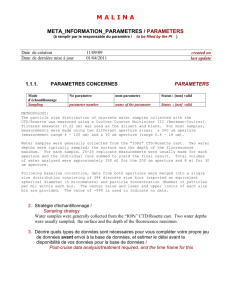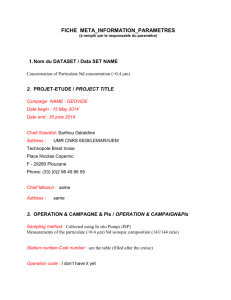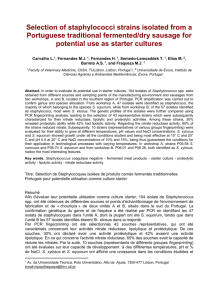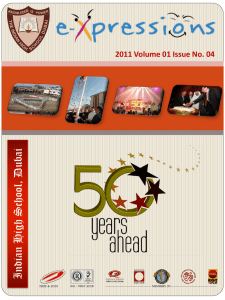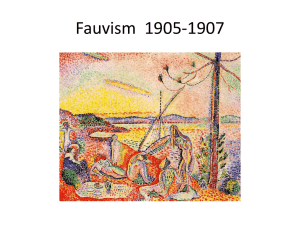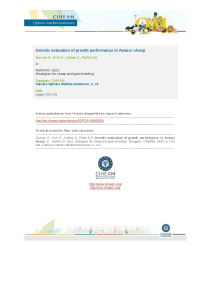DOC ENG
advertisement
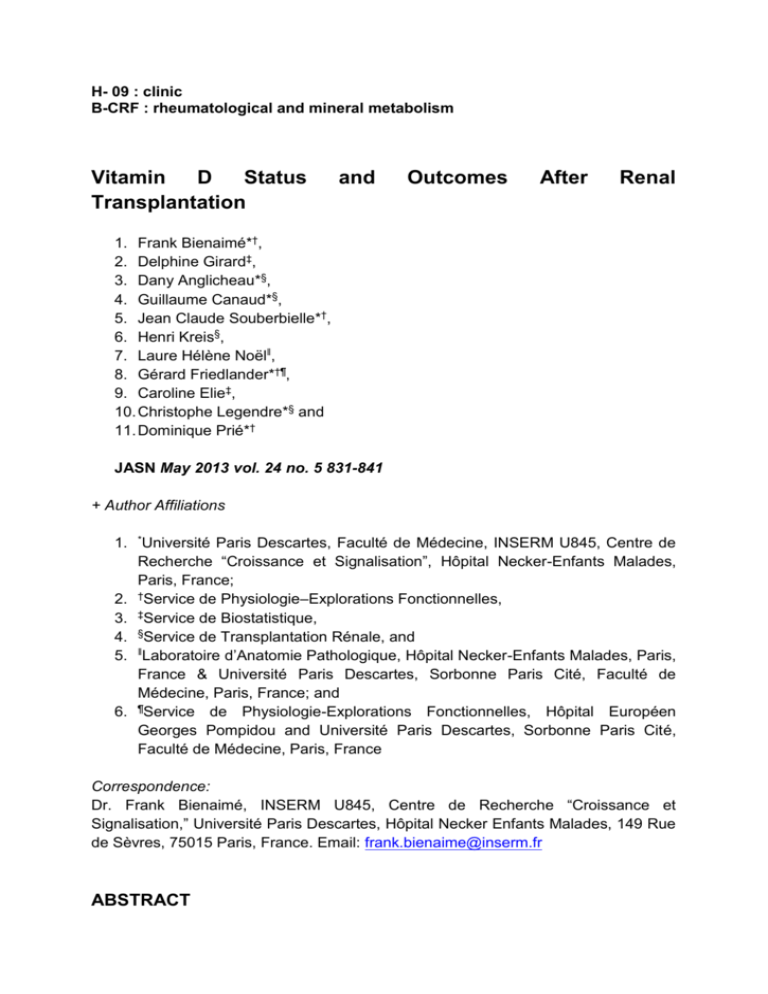
H- 09 : clinic B-CRF : rheumatological and mineral metabolism Vitamin D Status Transplantation and Outcomes After Renal 1. Frank Bienaimé*†, 2. Delphine Girard‡, 3. Dany Anglicheau*§, 4. Guillaume Canaud*§, 5. Jean Claude Souberbielle*†, 6. Henri Kreis§, 7. Laure Hélène Noël‖, 8. Gérard Friedlander*†¶, 9. Caroline Elie‡, 10. Christophe Legendre*§ and 11. Dominique Prié*† JASN May 2013 vol. 24 no. 5 831-841 + Author Affiliations 1. *Université Paris Descartes, Faculté de Médecine, INSERM U845, Centre de Recherche “Croissance et Signalisation”, Hôpital Necker-Enfants Malades, Paris, France; 2. †Service de Physiologie–Explorations Fonctionnelles, 3. ‡Service de Biostatistique, 4. §Service de Transplantation Rénale, and 5. ‖Laboratoire d’Anatomie Pathologique, Hôpital Necker-Enfants Malades, Paris, France & Université Paris Descartes, Sorbonne Paris Cité, Faculté de Médecine, Paris, France; and 6. ¶Service de Physiologie-Explorations Fonctionnelles, Hôpital Européen Georges Pompidou and Université Paris Descartes, Sorbonne Paris Cité, Faculté de Médecine, Paris, France Correspondence: Dr. Frank Bienaimé, INSERM U845, Centre de Recherche “Croissance et Signalisation,” Université Paris Descartes, Hôpital Necker Enfants Malades, 149 Rue de Sèvres, 75015 Paris, France. Email: frank.bienaime@inserm.fr ABSTRACT Kidney transplant recipients usually have low vitamin D levels, especially in the early posttransplantation period, but the association between vitamin D status with renal outcomes is not well described in this population. Here, we studied a prospective cohort of 634 kidney recipients who underwent transplantation at a single institution between January 2005 and June 2010. In this cohort, low 25-hydroxyvitamin D concentrations 3 months after transplantation did not predict early death or graft loss but were independently associated with lower measured GFR at 12 months (P=0.001) and higher risk for interstitial fibrosis and tubular atrophy (P=0.01). In contrast, levels of calcium, phosphorus, calcitriol, parathyroid hormone, or fibroblast growth factor-23 were not consistently associated with any of the studied outcomes. In conclusion, low 25-hydroxyvitamin D concentration measured 3 months after transplantation is an independent risk factor for interstitial fibrosis progression and is associated with a lower GFR 1 year after transplantation COMMENTS In this large prospective observational study of patients who had recently received a kidney transplant, low 25(OH)D levels 3 months after transplantation were independently associated with reduced mGFR 9 months later. In this large prospective observational study of patients who had recently received a kidney transplant, low 25(OH)D levels 3 months after transplantation were independently associated with reduced mGFR 9 months later. In contrast, other hormones implicated in mineral metabolism, including 1,25(OH)D, PTH, and FGF-23, were not independent predictors of 12-month mGFR or interstitial/fibrous atrophy (IF/TA) progression. Cholecalciferol supplementation is a safe way to increase 25(OH)D concentrations in kidney transplant recipients. The results of this study should encourage randomized controlled trials evaluating the effect of early cholecalciferol supplementation on renal allograft function. Pr. Jacques CHANARD Professor of Nephrology
